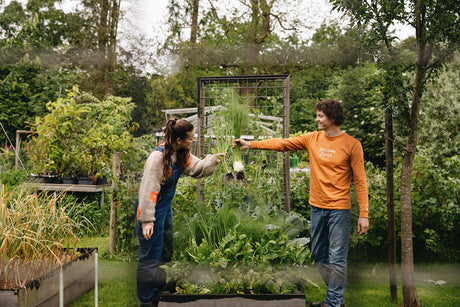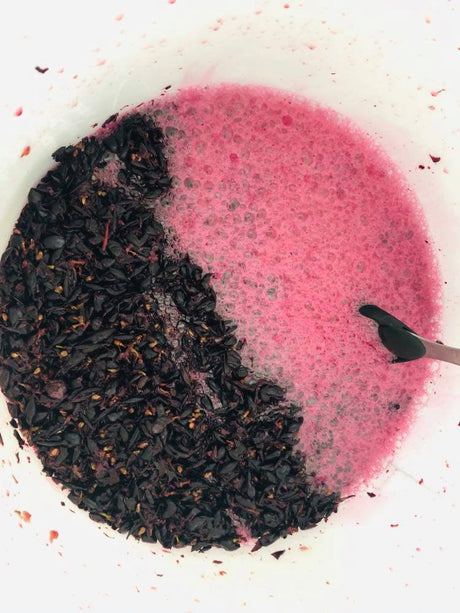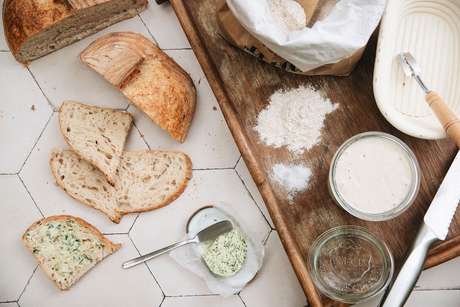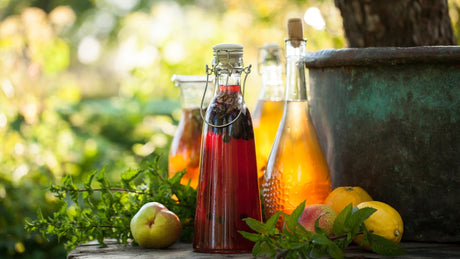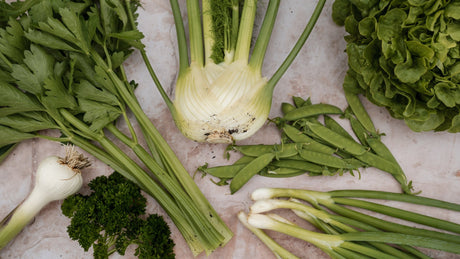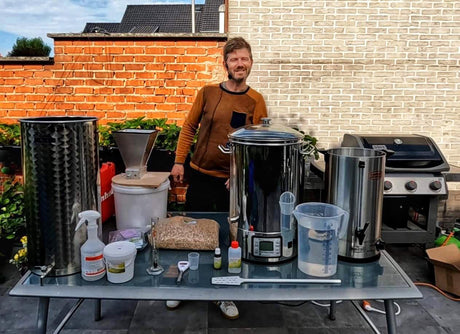Growing Parsley - Sow Just Twice for a Year's Harvest
"Tomke, will you get some parsley from the garden!?" I can still hear my mother saying it when I was little. In our house, there were five of us, and no raw vegetables or soup were served without a bunch of freshly chopped parsley we grew in the garden. My parents didn't have a proper vegetable garden, but parsley was there. The freezer also held dozens of packets of this delicious herb. My parents—who are now in their late seventies—moved to an apartment in the late '90s. Now I'm the one growing parsley. My father has the key to my house, and I regularly see him come by to cut parsley. How wonderful. Growing parsley is more than just a sprig of "garnish" on your cheese croquette. It's a versatile herb. It's used in countless cooking styles and dishes. Parsley is like salt in a dish; it connects the flavors and elevates the dish. From a vegetarian omelet to a parsley pesto to a chimichurri sauce on a piece of grilled meat, parsley adds freshness and intensity to your dish. Today, parsley is the most widely used herb in the world. In this article, I have one mission: to help everyone grow lots of parsley!

Parsley chimichurri Besides being a flavor bomb, parsley is also good for your body and packed with nutrients. Did you know that parsley contains more vitamin C than an orange? Keep the sprigs to add to your smoothies.
Growing Parsley - Annual, Perennial or ???
Most vegetable garden plants are annuals. There's absolutely no point in keeping a tomato plant or radish alive; in fact, it wouldn't work. There are also perennials like thyme, rosemary, or sage. Harvesting doesn't mean the end of the plant, and even winter frosts won't kill it. Parsley is an exception; it's a biennial. The parsley plant produces delicious green leaves in its first year. In the second year, the leaves are less appealing, and the plant produces beautiful flowers that attract bees. As a bonus, you can also harvest the root in the second year. The root is even more intensely flavorful than the leaves. Before removing the root, also harvest the seeds . You can sow these again the following year. Parsley for life!

Flat and curly parsley
Growing Parsley - Flat and Curly Parsley
Parsley is closely related to dill , carrots , and celery. The aromatic similarities are obvious. Parsley comes in two forms: flat-leaf parsley and curly-leaf parsley. Chefs prefer the flat-leaf variety because it's easier to use. I personally prefer curly-leaf parsley because it's a more attractive plant and has more texture or "bite" than flat-leaf parsley. View our parsley seeds here
Sowing parsley
Parsley seeds naturally germinate very slowly. Like carrots and celery, some seeds have underdeveloped embryos. This means the seeds need to mature further after sowing before they can germinate. This long germination time makes parsley seeds susceptible to soil-borne diseases and rot. Sowing early is often less successful because the soil temperature can sometimes drop very quickly, interrupting the germination process.

Parsley seed
Sowing parsley - sprouting
Product in the spotlight: https://www.moestuinweetjes.com/welkom/winkel/moestuin/materiaal/zaaien-en-planten-2/zaai-en-stekgrond-biologisch-humuforte-10-liter/ Parsley seeds germinate at temperatures between 5 and 32°C. I never do this, but many people pre-soak their seeds to speed up germination. The ideal germination temperature is 27°C. A propagator with a thermostat can help you regulate the temperature and humidity. In ideal conditions, your parsley seeds will germinate after 7 days. At lower temperatures, germination takes longer. After germination, you can quickly transplant the seedlings into the ground.
Sowing parsley - sow twice, harvest all year round
You heard it right. You only need to sow twice to harvest parsley all year round.
- You can sow the first crop indoors in February. Indoors, you can sow in trays with 73 holes. You don't have to fill all the holes, of course; you can fill 20 and use the rest for lettuce, thyme, marigolds, etc. When your seedlings are 5 cm tall, they can be transplanted into p7 pots. If you have a greenhouse, you can move your seedlings there until you plant them out in April. Leave 30 cm between the seedlings when planting them out. With this crop, you'll have the first fresh parsley in May.
- The second harvest is done outdoors in July. We usually don't think about sowing during this period, but this sowing will provide parsley in the fall and throughout the winter. Sow the seeds in a furrow 1 to 2 cm deep, keeping a 30 cm distance between the rows. A good tip: pour boiling water into your sowing furrow before sowing; it disinfects the soil. Ideal for a long germination period. If you're sowing during a dry period, prepare your sowing furrow the evening before and water it generously. When sowing, you can mix the seeds with moist potting soil and fill your sowing furrow 1 to 2 cm deep with the mixture. I sow by hand and cover my seeds with potting soil for good germination. I also do this with carrots and any seeds that don't germinate as easily.
Plant or sow your parsley in well-aerated soil with plenty of compost. Don't have compost? Mix a handful of all-purpose fertilizer pellets into your soil for each plant before transplanting. You can also grow it in containers or pots. Just be sure to keep your plants extra moist, as containers or pots dry out very quickly. Plant parsley among your tomatoes, asparagus, corn, or roses in a polyculture. Growing parsley among your roses is said to produce extra aromas.

Parsley can be pricked out (first crop) or thinned out (second crop) when they are so large
Growing parsley - planting out / thinning out the young plants
As mentioned, you can transplant your young parsley seedlings from your first harvest, spacing them 30 cm apart. For your second harvest in July, you'll need to take drastic action after germination: thin the seedlings to 30 cm when they're approximately 5 cm tall. Parsley plants need space; if you don't thin them, they'll stay small and suffocate. Now you know why those pots you buy in the supermarket die so quickly.
Growing Parsley - Successive Harvesting
Don't try to harvest immediately—I know, it's tempting, but it's best to wait until 80 to 90 days after sowing. Never harvest your parsley all at once. Walk around your parsley bed and pick the largest stems. This way, you encourage the plants to produce more and more. Don't harvest in full sun, but in the morning or evening. Don't stop picking, and never strip your plant bare. If you stop picking, your plant will become tough and rough; if you pick too much, it might not grow back. If you've harvested too much parsley, make someone happy by freezing it or throwing it on the compost heap. It's better to pick and throw it away than not to pick at all. Never throw away the stems of your parsley; they're even more aromatic than the leaves. The next time you roast portobello mushrooms or make pesto, you'll be delighted by the burst of flavor and texture the stems contribute.

Parsley, don't harvest it all at once and keep harvesting
Growing Parsley - What happens when winter comes?
If you can't get enough fresh parsley and want to keep harvesting it throughout the winter, you can do something similar. Either cover the plants with fleece to protect them from moderate frost (down to -6°C), or plant parsley in a large pot and place it indoors in a bright spot. A south-facing kitchen windowsill is ideal. View our parsley seeds here Parsley, along with dill and fennel, is the favorite food of the Papilio polyxenes butterfly, which is often confused with the queen butterfly. The Papilio polyxenes butterfly is also a butterfly, but a slightly different variety. In English, it's called the black swallowtail butterfly. Plant enough parsley for yourself and this butterfly. The butterfly caterpillar eats parsley but doesn't kill the plant. You'll be rewarded with a magnificent display if you get the chance to spot the butterfly in your garden. Whitefly is harmful to your parsley; treat the undersides of the leaves with an ecological product against soft-bodied insects.

Beautiful isn't it? Good luck growing parsley! If you find the information on this website valuable, consider purchasing your gardening supplies from our online store or sharing this page on social media. You'll be helping us tremendously.


